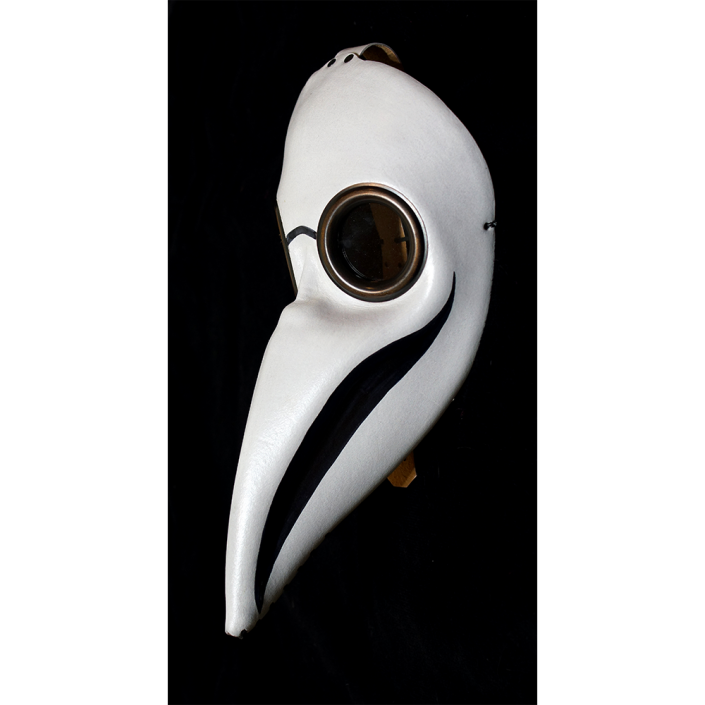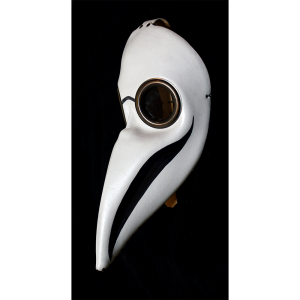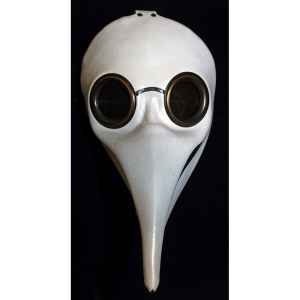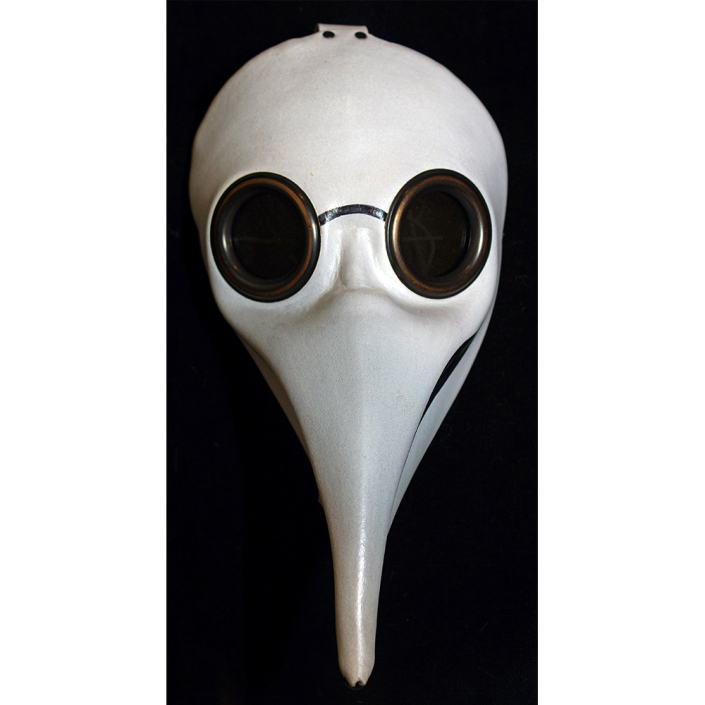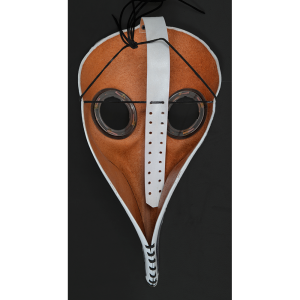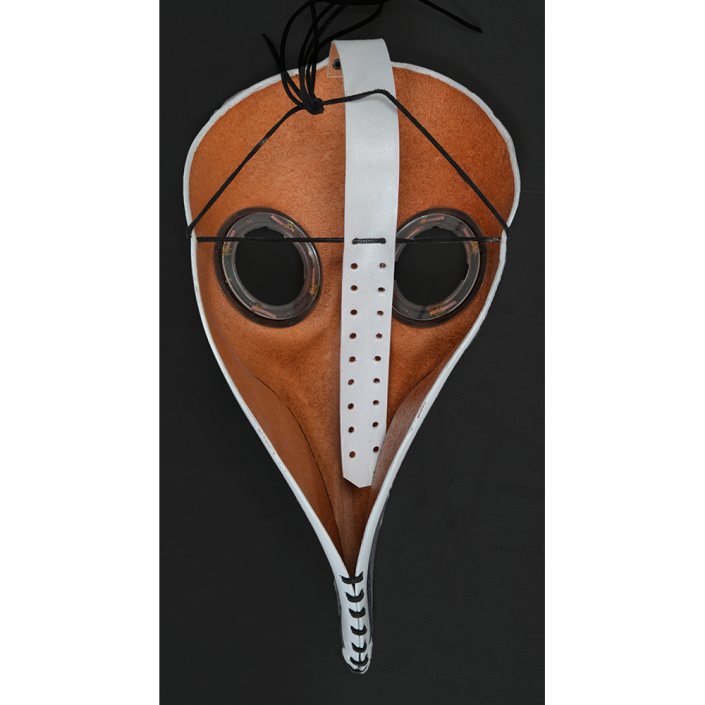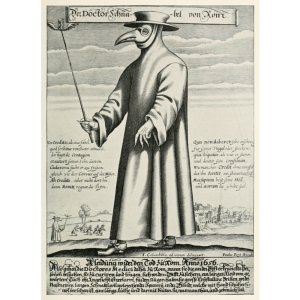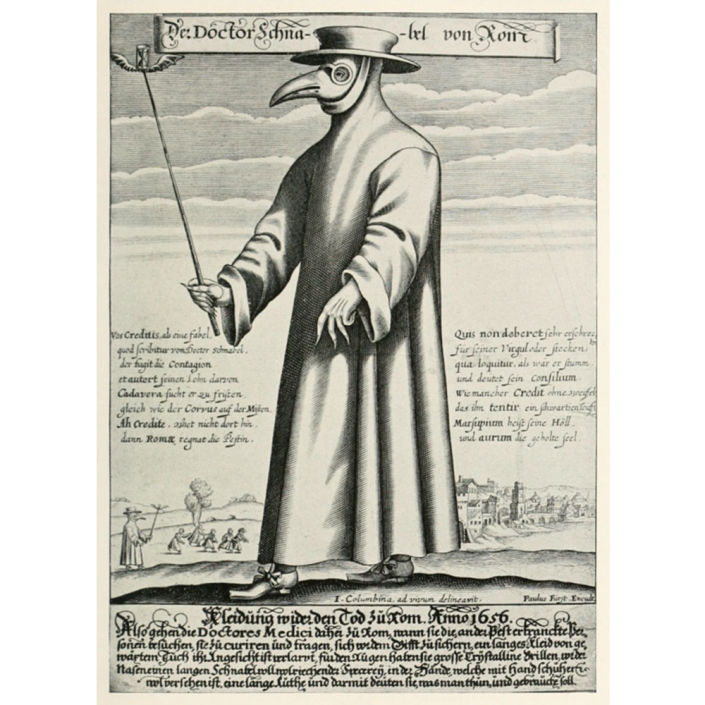TITLE: Commedia Plague Doctor
TYPE: face mask
GENERAL REGION: Europe
COUNTRY: Italy
ETHNICITY: Italian
DESCRIPTION: Plague Doctor Mask
CATALOG ID: EUIT004
MAKER: Lara Milanova (London, England, 1971- )
CEREMONY: Commedia dell’Arte; Carnival
AGE: 2011
MAIN MATERIAL: leather
OTHER MATERIALS: glass lenses; acrylic paint; brass buckles; brass O-rings
The Commedia dell’Arte was a form of public entertainment that succeeded the classical Roman theater in Italy. Like classical theater, Commedia performers wore leather masks to represent stock characters and often performed in amphitheaters to large audiences. However, the Commedia differed in having only a very basic plot sketch, with most of the lines invented extemporaneously by the actors. The Commedia‘s ability to stay topical and its frequent resort to vulgar humor, combined with the considerable talent of Italian troupes that traveled throughout Europe, made this form of theater extremely popular throughout the early 17th to late 19th centuries. Masked actors had to compensate for their inability to convey facial emotion through posture, gesture, and vocal nuance.
During the period of the Black Death in Europe, doctors visited plague victims to verify whether they have been afflicted and to offer treatment. Their outfit consisted of a wide brimmed hat to show that the man was a doctor, leather gloves and boots, a body-length linen gown covered in wax, and beaked mask with glass lenses to protect the face. The beak was stuffed with spices to “purify” the air that the doctor breathed, because it was widely and erroneously believed that the plague was spread through the air.
To learn more about Commedia dell’Arte, see Pierre Louis Duchartre, The Italian Comedy (Dover Pubs., 1966).
